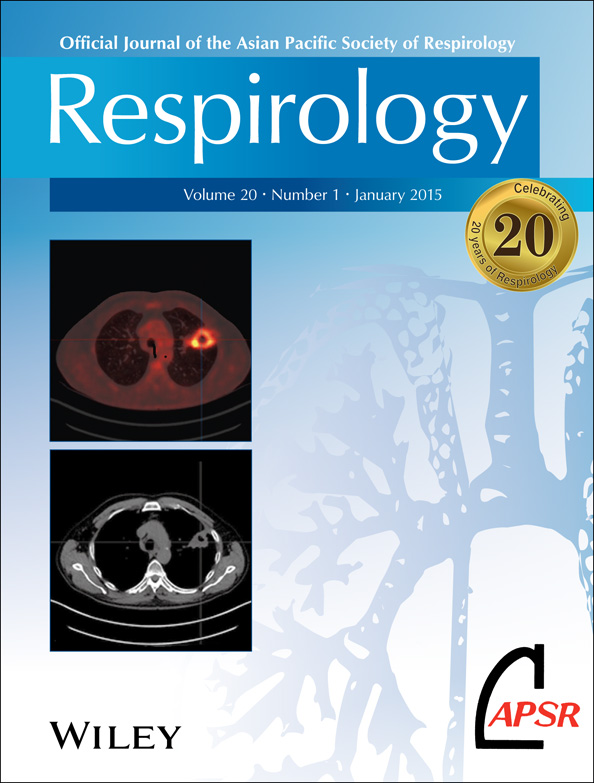Determining the cause of pulmonary granulomas: A multidimensional process
Abstract
Abbreviations
-
- CMI
-
- cell-mediated immunity
-
- DTH
-
- delayed-type hypersensitivity
Despite our awareness of granulomatous inflammation for more than a century, the cause of such inflammation remains an enigma. Great strides have been made in understanding the inflammatory cells and mediators involved in the process of granuloma formation. However, even today, little is known concerning why the host selects this form of inflammatory response as opposed to others. Granulomas usually form as a result of a non-degradable product and/or the result of a delayed-type hypersensitivity (DTH) response.1 DTH represents one half of the double-edged sword that also includes cell-mediated immunity (CMI). Both CMI and DTH are characterized by an expanded population of T lymphocytes, which, in the presence of antigens, produce cytokines locally.1 However, while CMI is a response that is beneficial to the host, DTH leads to pathological responses, including granulomatous inflammation, necrosis and cavity formation.1
Granulomatous inflammation is a common end result of numerous pathological processes, including infections, malignancies, immune deficiency syndromes, disorders of immune dysregulation, bioaerosol and occupational exposures. Therefore, the identification of granulomatous inflammation in and of itself does not identify the underlying cause of the inflammation. Much like a detective analysing a crime scene, identifying the culprit may be relatively straightforward or elude even the most brilliant mind.
The search for the cause of granulomatous inflammation is much more than an academic exercise. Treating a patient misdiagnosed with granulomatous inflammation from immune dysregulation, such as sarcoidosis, when the patient truly has a mycobacterial infection may have disastrous consequences.
Just as a detective will use all the tools at his disposal to seek the truth, so the clinician must often rely on disparate information in order to identify the cause of granulomatous inflammation. Obtaining an adequate medical history is often very informative. A history of exposure to an individual with active pulmonary tuberculosis would suggest that tuberculosis should be strongly considered. Exposure to bioaerosols known to be responsible for hypersensitivity pneumonitis (extrinsic allergic alveolitis) may be adequate to secure this diagnosis without performing a tissue biopsy if the clinical findings are compatible with that entity.2 Sometimes, a detailed history is required to uncover the correct cause of granulomatous inflammation, such as the use of a detailed questionnaire concerning beryllium exposure that identified numerous cases of chronic beryllium disease that had been misdiagnosed as sarcoidosis in one clinic.3
Physical examination and laboratory tests, including imaging studies, are additional tools that can suggest or confirm the cause of granulomatous inflammation. A biopsy demonstrating granulomatous inflammation in a patient with a red eye and nephrolithiasis has a high pretest probability of sarcoidosis. Other serologic and/or radiograph findings may strongly suggest a diagnosis of hypersensitivity pneumonitis, tuberculosis or sarcoidosis.
Finally, the pathological examination may be crucial in determining the cause of granulomatous inflammation. On many occasions, the pathological findings are the first evidence of granulomas, and the clinician must then backtrack by delving further into the medical history, as well as perform additional laboratory studies, to secure a diagnosis.
In this issue of Respirology, Nazarullah and colleagues analyse the aetiology of 190 pathological specimens that demonstrated granulomatous inflammation on lung biopsy at one institution in southwestern United States.4 They were able to make a confident diagnosis in 68% of specimens, a probable diagnosis in 13% of specimens and the diagnosis remained undetermined in 18%. The majority of the diagnoses (55%) were infectious, usually mycobacterial or fungal. Sarcoidosis was the most common non-infectious aetiology (21%), with drug-induced granulomatous lung disease a distant second (3%). The presence of necrosis within the granulomas favoured an infectious aetiology, whereas a lack of necrosis favoured a diagnosis of sarcoidosis. These findings mirrored the results of previous similar analyses,5, 6 with the major substantial differences between these studies being different frequencies of various infections that are probably attributable to different local rates of endemic mycobacterial and fungal disease. This last postulate emphasizes that the likelihood of specific causes of granulomatous inflammation is affected by the characteristics of the local population as well as the local frequencies of potential infectious pathogens.
Two additional caveats must be kept in mind in the interpretation of these data. First, it is unlikely that the true frequencies of aetiologies of lung granulomas are close to the distribution reported by Nazarullah and co-authors. Many of these aetiologies are usually diagnosed without performing a lung biopsy, including tuberculosis, other mycobacteria and hypersensitivity pneumonitis. Second, the authors' exclusion of ‘incidental granulomas’ is a potential cause for error. I recently encountered a patient with biopsy-proven lung carcinoid tumours where well-formed granulomas were observed in the periphery of the specimen. Although these granulomas were initially thought to be incidental to the tumour, the patient subsequently developed uveitis and dysregulation of vitamin D metabolism, which confirmed the diagnosis of sarcoidosis.
Because the histological examination is one of the many investigations required to secure a diagnosis of granulomatous inflammation, it is unrealistic to expect that these data provided by Nazarullah and co-workers provide unequivocal answers. Nonetheless, these data provide a good starting point in assessing the cause of lung granulomas when a lung biopsy has been performed. However, a healthy degree of scepticism concerning the pathological findings and exploration of data beyond the biopsy may often be required to reach a secure diagnosis.




